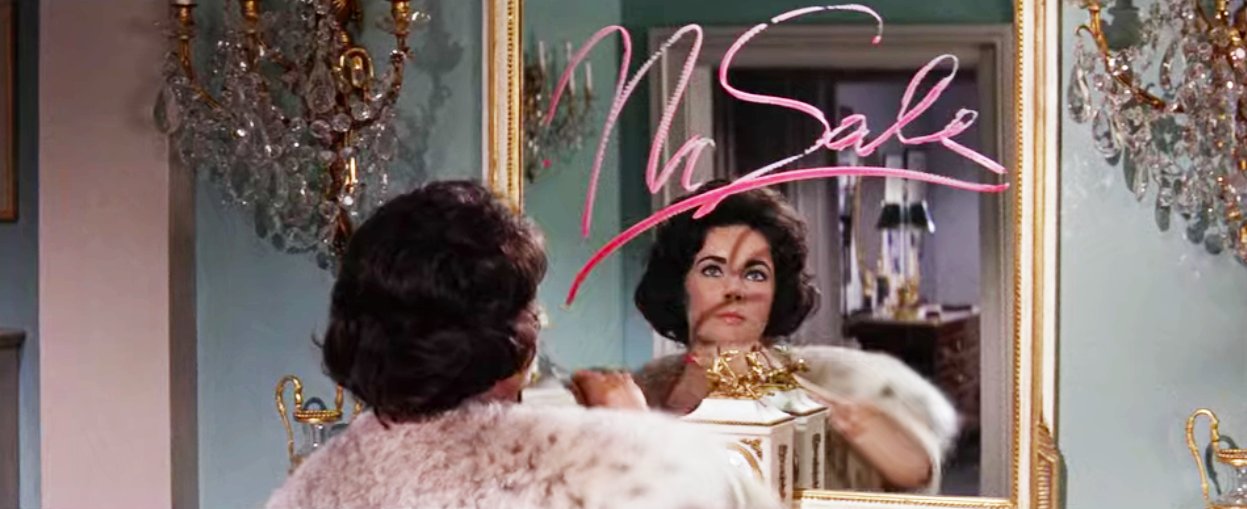
Taylor Swift’s “Elizabeth Taylor” Lyrics Explained
There are plenty of connections to be made between Taylor Swift and Elizabeth Taylor, two women who have bravely defied expectations and rewritten the rules. Here, we’re breaking down the lyrics of Taylor Swift’s new song “Elizabeth Taylor” from The Life of a Showgirl to explain how Taylor’s words relate to Elizabeth’s life — from one icon to another.
“The view of Portofino was on my mind / when you called me at the Plaza Athénée”
This lyric references not one, but two luxurious locales visited by Elizabeth during her life. Elizabeth frequently vacationed in the idyllic beaches of Portofino, Italy, with her husband Richard Burton. In fact, it was there that in 1964, Richard proposed to Elizabeth on the wisteria-covered balcony of the Hotel Splendido's Suite 471. In 1971, Elizabeth and Richard resided at the Hôtel Plaza Athénée in Paris for six months, at a time when the hotel was a center for social and cultural life and a magnet for Hollywood stars.
“Oftentimes, it doesn't feel so glamorous to be me”
This lyric was first revealed at a Spotify pop-up ahead of the album’s release, written in lipstick on a vanity mirror inside a showgirl-themed dressing room. The staging echoed Elizabeth Taylor’s 1960 film BUtterfield 8, where her character Gloria Wandrous writes “No Sale“ in lipstick across a mirror in the beginning of the film.
“Cry my eyes violet / Elizabeth Taylor”
Elizabeth famously had deep blue eyes that often appeared violet. Not only were they uniquely pigmented, they were big, beautifully shaped, and framed by a rare double row of lashes and thick eyebrows, which all contributed to the drama and expressiveness of her eyes, making her gaze unforgettable.
“Be my NY when Hollywood hates me”
Elizabeth had a complicated relationship with Hollywood, starting out as a product of its studio system before becoming a force that reshaped celebrity culture. In 1961, after more than a decade as one of MGM’s biggest stars, Elizabeth controversially left the studio she had been associated with since childhood, frustrated by their rigidity and control. Her departure marked a turning point in Hollywood’s transition away from the old studio contract era, and allowed her to pursue more lucrative projects, like her then-record $1 million salary for Cleopatra in 1963. She also lived in New York in the late 50’s, residing on Park Avenue with then-husband Mike Todd. Mike, a legendary producer, had negotiated with MGM to drop the last picture from Elizabeth’s existing contract, but those plans fell apart when he tragically died in 1958. This left Elizabeth on the hook for one more movie, an obligation she fulfilled with BUtterfield 8.
“What could you possibly get for the girl who has everything and nothing all at once?”
Pulling double duty in addition to highlighting how isolating a life of fame can feel, this lyric is also a cheeky reference to the fact that Elizabeth starred in the film The Girl Who Had Everything in 1953.
“Babe, I would trade the Cartier for someone to trust”
Throughout her life, Elizabeth had a close relationship with the jewelry house Cartier, as a loyal customer and admirer of their work. The house was responsible for some of the most memorable pieces in her collection, including the Diamond and Ruby Suite that Mike Todd famously gave to her poolside in the South of France. She also worked with Cartier on re-setting the iconic Taylor-Burton Diamond into a necklace, the significant setting for La Peregrina Pearl necklace, and the ruby and gold chain for the Taj Mahal Diamond.
“We hit the best booth at Musso & Frank’s”
Elizabeth Taylor was a frequent patron of Hollywood hotspot Musso & Frank Grill, a restaurant known for its famous clientele and still serving classic dishes today. In the ‘50s, she and other celebrities like Marilyn Monroe and Steve McQueen could be found enjoying drinks and appetizers in Musso’s famous Back Room.
“All my White Diamonds and lovers are forever / In the papers, on screen, and in your minds”
It wouldn’t be a song about Elizabeth without mention of her legendary collection of jewels, including her well-known love of white diamonds. In fact, Elizabeth cherished these precious stones and what they represented to her so much that she used their legacy as inspiration for the name of her iconic White Diamonds fragrance, a sensual floral scent that has remained an international best seller since its launch in the 90s.
The second part of this lyric nods to Elizabeth’s famous relationship with the press and the public. No stranger to scandals and presumptuous opinions, Elizabeth Taylor has been exposed to hostility from the public on a few occasions. Her private life becoming fodder for public conversation inadvertently helped give birth to modern celebrity culture and journalism, with gossip columns and paparazzi making a living from her life. In spite of living under intense scrutiny, Elizabeth lived her life to the fullest, always remaining true to herself. As a result, her legacy lives on, in our imaginations, in our culture, and in the work of the biggest pop star in the world.